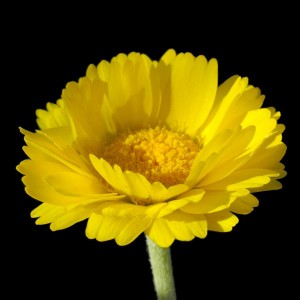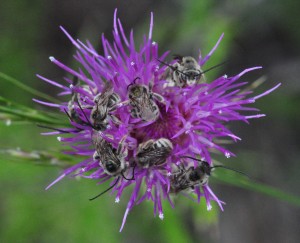September 4, 2013
COMPOSITE FLOWERS
Hiking in the mountains we see lots of flowers in the composite family – the Asteraceae (from the Greek word for a star – since the flowers usually have a center, and parts that radiate outward). Close examination reveals that what looks like a single flower is really a collection of tiny flowers. In the typical daisy form, the parts that look like petals are actually flowers that radiate outward, and are called ray flowers. The center is packed with flowers called disc flowers. One of my favorites is Desert Marigold (Baileya multiradiata) The genus is named after William Whitman Bailey (1845-1914), and the species – multiradiata, means “having many ray flowers”, as this picture shows.

I took one apart, and spread it out on a piece of black velvet. By my count there are about 50 ray flowers, and 200 disc flowers in this one flower head. The disc flowers usually grow in a spiral, with the outside flowers opening first. This explains why these flowers stay in bloom so long, and why bees and other insects can visit the same flower so many times. They know that it is not one flower, but hundreds of flowers, opening over an extended period. 
Thistles are also composite flowers, but they have only disc flowers. On a recent walk with my family on Box Camp trail in the Catalinas, we came across this thistle (Cirsium wheeleri), with some kind of flies having a party on the flower head. There was plenty of food for all. 

I think the yellow one at the top is your watercolor but not sure – its so perfect! I am glad you are sharing the beauty of small things maybe not noticed by all.
So gld you invited David and Daniel and I for a hike and flower photo time while we were there.. gasp… 10 years ago!
I like your photos. However, these are not flies – they are native bees. I would guess cactus bee or leafcutter, but here is more information on bees native to the Sonoran Desert: http://www.arizonensis.org/sonoran/fieldguide/arthropoda/hymenoptera.html
Cheers, from one explorer to another.
Thank you for that – another area to learn more about!